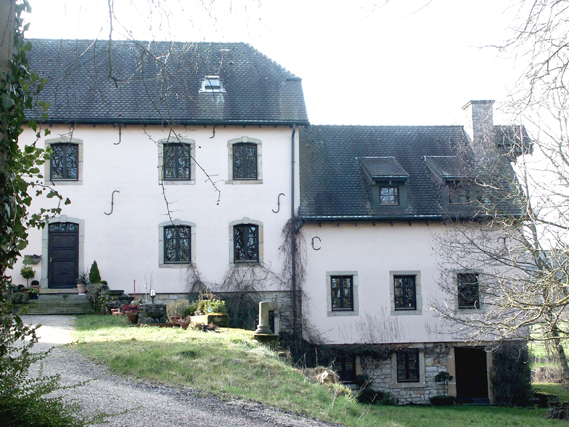Niederanven: a mill township
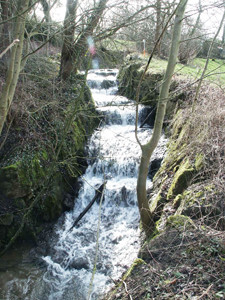
The water cascade in the Senningen brook above the mill, from where the trench led to the mill (blocked today).
Niederanven is one of the communities with the most of mills in Luxembourg. In the beginning of the 19th century, 12 mills were run simultaneously (5 near the Hostert brook and 7 at the brook of Senningen). Besides oil seed (ground and squeezed) also paper, cloth and leather was lumbered and wooden trunks serrated.
Ban mills
The oldest mills (from the beginnings of the 9th century) had been the ban mills. The land lords had the right to run the mills and their subjects the duty to serve the mill master and give the products to the landlord. Every contempt against this ban law was punished. The mill master at these times a free and respected person, gathered the harvested products to hand them over to the landlord. For this reason he had never been very popular. In spite of the citizen’s growing resistance, this system had been applied up to the time of the French revolution, around 1795. After the invasion of the French troops, the ban mills had been privatized.
The ban mill from Niederanven
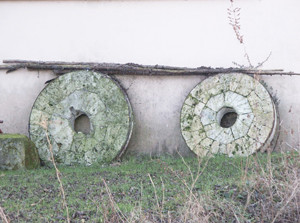
The old mill stones from the French Champagne are the only technical leftovers from the old mill.
The first record of the Niederanven ban mill can be found on documents from the 17th century, but is supposed that the mill had been there long before. It had been powered by the brook of Senningen (Aalbach). A small water cascade can still be found near the mill. The landowners of the site changed often but the most famous was probably the pharmacist Rademacher from Luxembourg City, the same that ran the therapeutic bath in Niederanven. It is rather sure that there had been several mill stones (2 made of stone from the French Champagne and one big mill wheel of about 4.50 m diameter).
Renovation
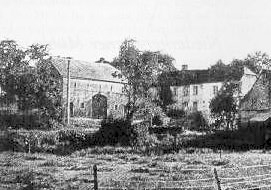
View from 1939 on the mill, shortly before it stopped its service.
Around 1940, the mill service stopped its business and in 1955 a local farmer bought the site for the pastures around the mill. The buildings degenerated and in 1974 the mill had been sold for private purposes, which spared him from complete destruction and the new owner, an expert in restoring, transformed the old ruins into a beautiful country house.
The St.Lucia Chapel
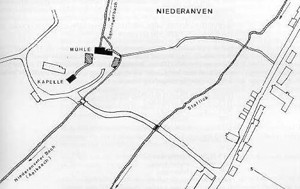 On the old land register maps from 1824 you can notice the presence of a chapel, close to the mill on the way out to Münsbach. It was dedicated to St. Lucia and was supposed to be the oldest sanctuary in Niederanven.
On the old land register maps from 1824 you can notice the presence of a chapel, close to the mill on the way out to Münsbach. It was dedicated to St. Lucia and was supposed to be the oldest sanctuary in Niederanven.
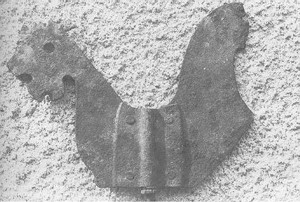
When the new parish church had been constructed in 1851, the chapel slowly degenerated and the only witness from these times is the old chanticleer from the chapel’s tower.
The tan mills in Niederanven
As a manager of the St. Lucia Chapel you can find the name of a certain “Fellmacher” (meaning fur maker), witnessing that there had also been tan mills in Niederanven. The power of the water had been used to grind the barks, wood or leaf of the oak trees, rich in tannin.

